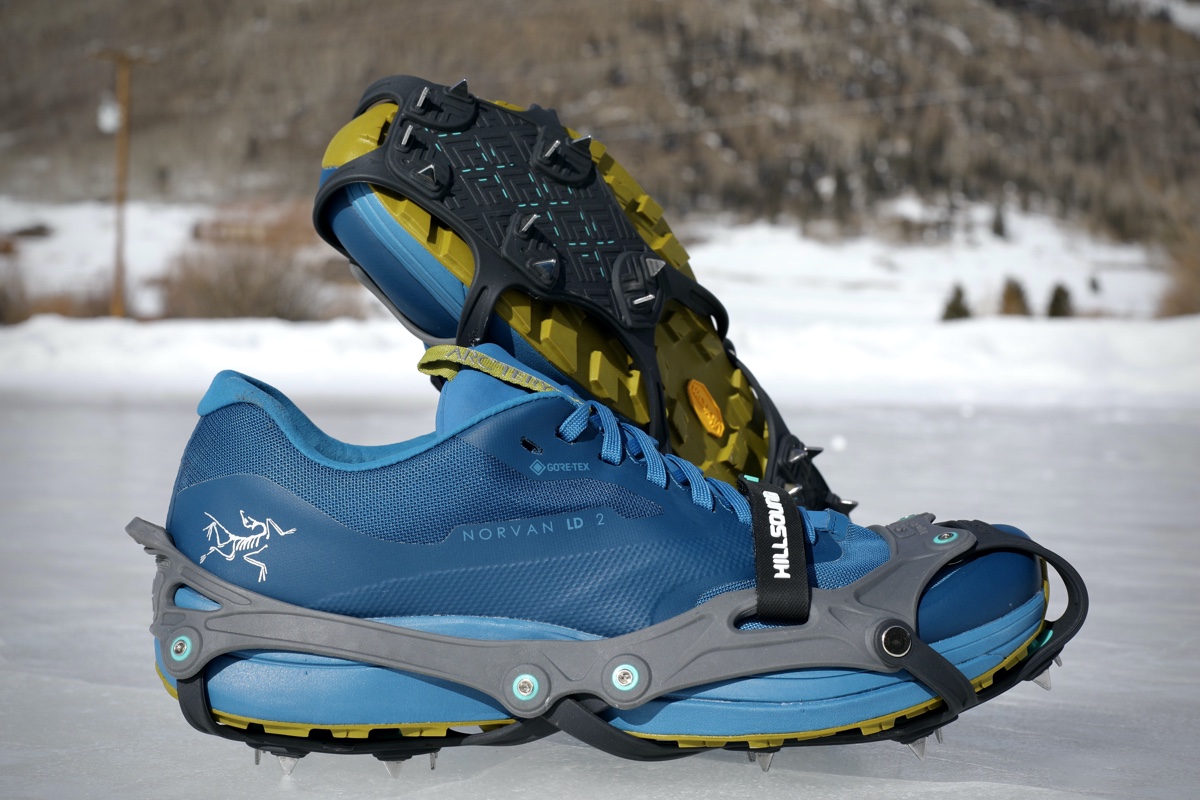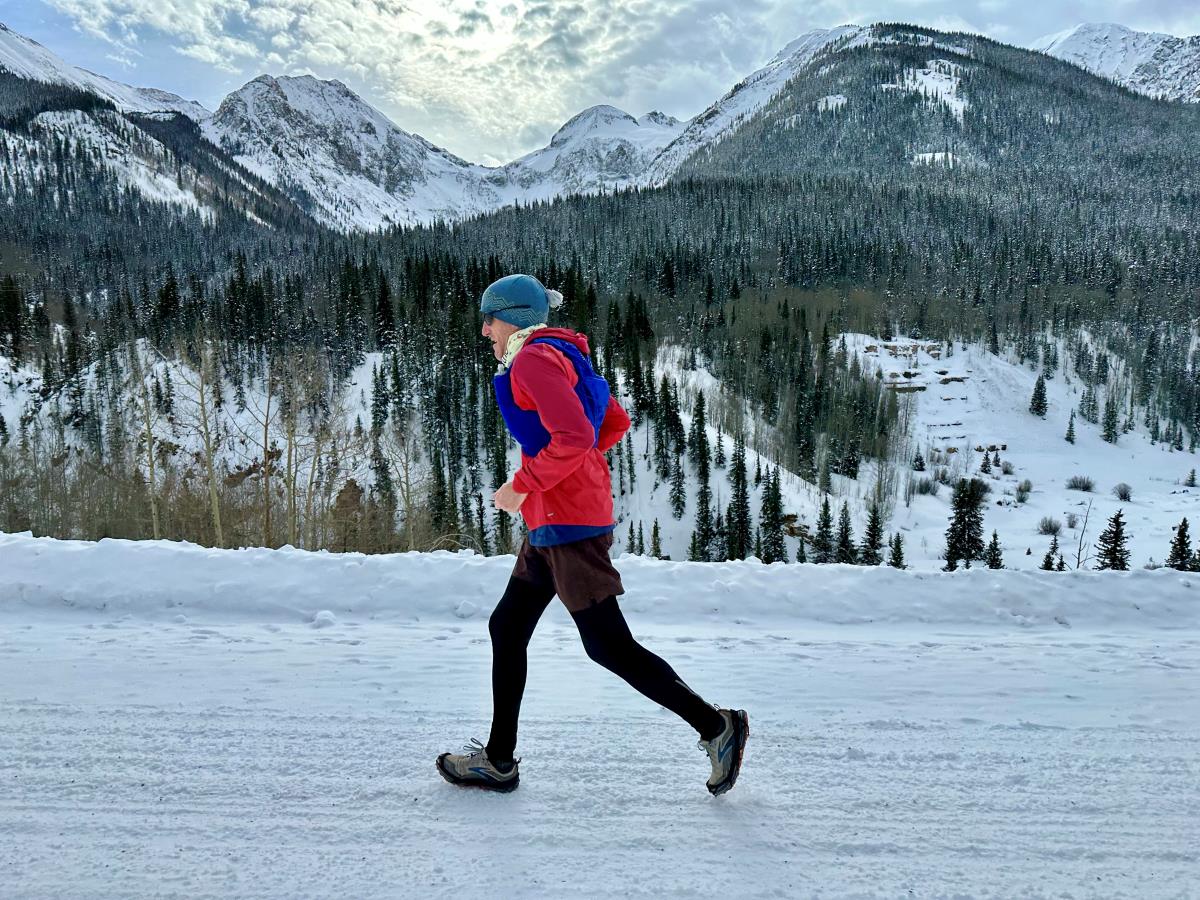 It’s cold-weather winter running time! And while that can be a welcome relief, compared to oven-hot summers, the deep winter presents significant running challenges.
It’s cold-weather winter running time! And while that can be a welcome relief, compared to oven-hot summers, the deep winter presents significant running challenges.
The effects of cold weather running are fairly well-known: painfully cold temperatures, deep wind chills, and slick and unsteady footing. As are the serious risks: hypothermia, frostbite, and falls due to snow and ice are chief among them.
But cold winter weather also presents unique biomechanical challenges. Cold temperatures, poor footing, and additional gear requirements can cause:
- Alterations to the running stride.
- Changes to forces and energies leaving and entering our bodies.
- Potential long-term range of motion and efficiency changes.
This article addresses those specific challenges — and presents strategies to overcome the cold and slick winter conditions and to run successfully without pain, injury, or efficiency loss.

iRunFar’s Meghan Hicks tackling chilly conditions in Garmisch, Wisconsin. Photo: iRunFar/Bryon Powell
The Challenges of Winter Running
Deep winter running presents three unique challenges:
Extreme Cold
Mobile, efficient, and enjoyable running requires the body tissues to warm up. This naturally occurs when we begin running (or any other dynamic activity). This tissue warming has both a temperature and a fluid component. Muscles, joints, and connective tissues increase in temperature and hydration to support relaxed, fluid, and flexible running.
However, tissue warm-up takes time.
In ambient conditions, tissue warm-up occurs in a matter of minutes. But in extremely cold temperatures, this can take far longer. Or it may not happen at all. Or, tissues can stiffen again with rapid changes in temperature or windchill.
Impaired Footing
Winter running in climates featuring frequent snowfall presents a unique challenge to traction underfoot. Acute snowfall can cover all surfaces with heavy blankets of snow. While this is often avoidable — waiting for the shovels and plows to appear — more often than not, even cleared surfaces have remaining snow and ice that turn bland pavement and sidewalks into truly treacherous terrain.
Extra Gear
Standard warm-weather running gear for most of us consists of a single layer of clothing — if that. Winter conditions featuring severe cold and wind often require multiple thick, relatively heavy and potentially movement-restricting clothing layers. While these items might keep you snug and protected from the elements, they invariably affect the free movement of the arms, legs, and torso while running.
The Biomechanical and Orthopedic Consequences of Winter Running
All three of these challenges can have biomechanical and orthopedic consequences. They include:
Decreased Range of Motion
Cold tissue and stiff clothing can impair mobility, as can slick footing, which can shorten our running stride.
Increased Tissue Stiffness
Both a shortened stride and frank coldness can cause increased tissue stiffness. Even cold-weather posturing — like a subtle hiking of the shoulders in chilly conditions — can cause increased stiffness in the neck and shoulders.
Impaired Stride Efficiency
Over time, a shortened stride can impact our overall running efficiency. These changes can be subtle but significant. And a short, shuffly snow stride can sustain itself, even when winter turns to spring or if we hop on the treadmill instead of braving the winter chill and snow.
Any number of these consequences can potentially lead to increased aches, pains, injury, or performance deficits.
How to Overcome Winter’s Running Challenges
Here are some ways to address these challenges, effectively train in the cold, and enjoy the unique beauty that winter running provides.
Indoor Warm-Up
Most of us love the ability to throw on running clothes and simply bolt (or shuffle) out the door. Extreme cold often requires a pre-emptive indoor effort in order to achieve both a physiological (temperature) and functional (mobility) warm-up effect.
Consider the following:
- Mobility routine. A dynamic mobility routine such as this one can promote joint and tissue motion as well as increase body heat.
- Pre-run core strength. Performing core-activator exercises — such as the diagonal chop and short-and-long — also have a warming effect, in addition to prepping the deep abdominal and gluteal muscles for the rigors of the upcoming run.
In short, any exercise routine performed indoors before running will have the effect of increasing tissue extensibility and generating body heat. The more running-specific, the better.

A light yoga routine is one of the many options for an indoor warm-up you can do before facing the elements. Photo: iRunFar/Meghan Hicks
High-Traction Footwear
Having high-performance footwear can make or break a winter run. Unfortunately, in the same manner as a Nordic skier chooses specific waxes for the conditions, what type of shoe is best for the day can vary widely. Some standard trail shoes are great in snow. Some are shockingly bad — collecting snow in the treads and, paradoxically, providing worse traction than a basic road shoe. External traction devices can be lifesavers in icy conditions but be superfluous or even detrimental if the day is simply cold but with clear pavement.
Article’s like iRunFar’s Best Cold Weather Running Gear and Best Winter Running Traction Devices guides provide great recommendations for footwear and traction options. Experiment and choose what’s best for you.

The Hillsound Flexsteps Crampons — one of the many external traction options available for winter running. Photo: iRunFar/Bryon Powell
Windproof Layers
With current technological developments, perhaps the most important gear factor is windproofing. Even summer gear tends to provide excellent moisture-wicking, which is crucial for keeping moisture from collecting on and cooling the skin.
But as I recently experienced first-hand, running in -10 degrees Fahrenheit in Wisconsin last month, windproof layering is crucial for keeping heat and protecting tissues from severe windchill.
Generating and maintaining heat in the arms and legs is easier than the rest of the body. Thus, windproof layering is most important at the torso (our heat generator), the extremities (the head and the hands), and … well, the pelvis! Keep sensitive areas covered and protected.
Skin Protection With Oils
When possible, substituting an applied oil for clothing can provide a good advantage to heavy layers. This is particularly true for the face, head, and neck. Face masks and other coverings can be extremely challenging to breathe through (and only worsen, as frost can coat the exterior with prolonged use).
Applying various oils to the skin — such as petroleum jelly or plant-based oils — can be a great option to protect the skin while still allowing moisture release and a full range of motion. (Take it from me. They don’t call me “Olive Oil Joe” for nothing!)
An oil layer can also afford additional protection instead of another clothing layer, especially if you lack strong windproofing.
Find Your 100-Mile Stride
Between heavy clothing layers and slick footing, a full, long, and fast stride can be energy-intensive or downright dangerous. Sometimes simply staying upright in icy conditions requires a shuffly stride.
Use that to your advantage by finding and honing your 100-mile stride. This compact, light stride is short but still efficient: extending the hip behind, lifting the foot upward, and landing beneath your body — but in miniature to a fast, open lope.
This strategy avoids aggressive push-off and landing that can lead to slips and falls. But its mindfulness keeps it efficient and works toward a run strategy that may be useful later in the year for many!

Karl Kamm adjusting his stride for cold conditions in Silverton, Colorado. Photo: iRunFar/Bryon Powell
Save the Speed for Indoors
Those of us with early-season race goals may be tempted to run fast outdoors, even in bitter cold and slick conditions.
The physiotherapist and coach in me tells you to avoid that. Both the extra clothing and footing will invariably alter the efficient stride pattern required for higher-end speeds, even moderate tempo and race-paced runs.
Save these faster runs for both clear footing and manageable temperatures. Be certain you can access your normal, most efficient stride before attempting either high-end speed or higher-volume speed runs.
A good alternative for winter speed running is the indoor treadmill. This, too, poses unique challenges, but the ideal footing and temperatures will allow for the full expression of your speed stride.
Conclusion
The first step to optimizing winter running is awareness. Mitigating risks during this challenging time of year can still allow for effective training and enjoyable running, even when temperatures plunge and the flakes fly.
Call for Comments
- How has your winter running season been going?
- Have you had any seasonal issues like those described in this article?

